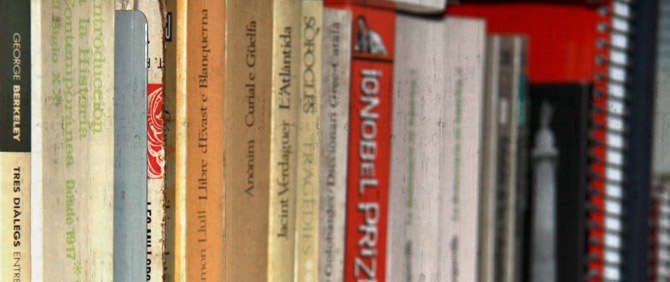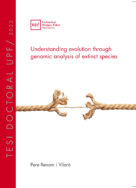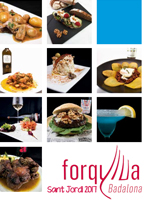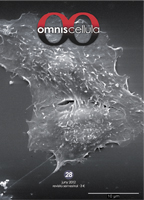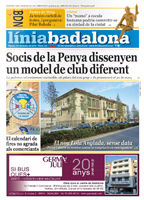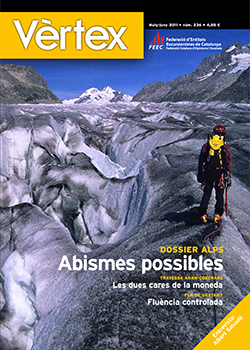Magazines, journals and books
This section shows the books, and the articles that I have published in science journals and outreach magazines at national, or international level. Science publications focus on paleogenomics and marine ecology, while popular publications cover different areas such as genealogy, philosophy of science, mountaineering, urban planning, linguistics, education, anthropology, natural history, climate change or technology.
“Understanding evolution through genomic analysis of extinct species”
“Genetic data from the extinct giant rat from Tenerife (Canary Islands)…”
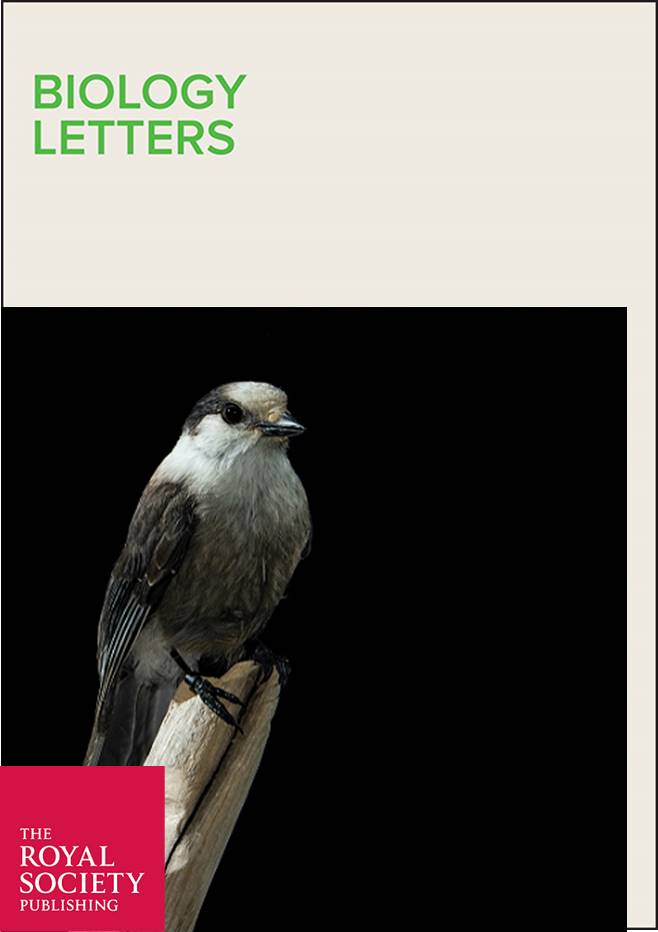 |
Article in the journal Biology Letters Article published together with Toni de-Dios, Sergi Civit, Laia Llovera, Alejandro Sánchez Gracía, Esther Lizano, Juan Carlos Rando, Tomás Marqués-Bonet, Gael J. Kergoat, Isaac Casanovas-Vilar and Carlos Lalueza-Fox, in the volume 17 (12) of the journal Biology Letters, in December 2021. The study recovers, for the first time, mtDNA from the Tenerife giant rat (Canariomys bravoi), which has been extinct for more than a millennium. With these data, is determined its relationship with the current African rat (Arvicanthis niloticus), is estimated a rate of increase in body size much higher than that observed in non-island mammals, and is calculated its the divergence about 650,000 years ago. |
“50 preguntes i respostes per a tothom”
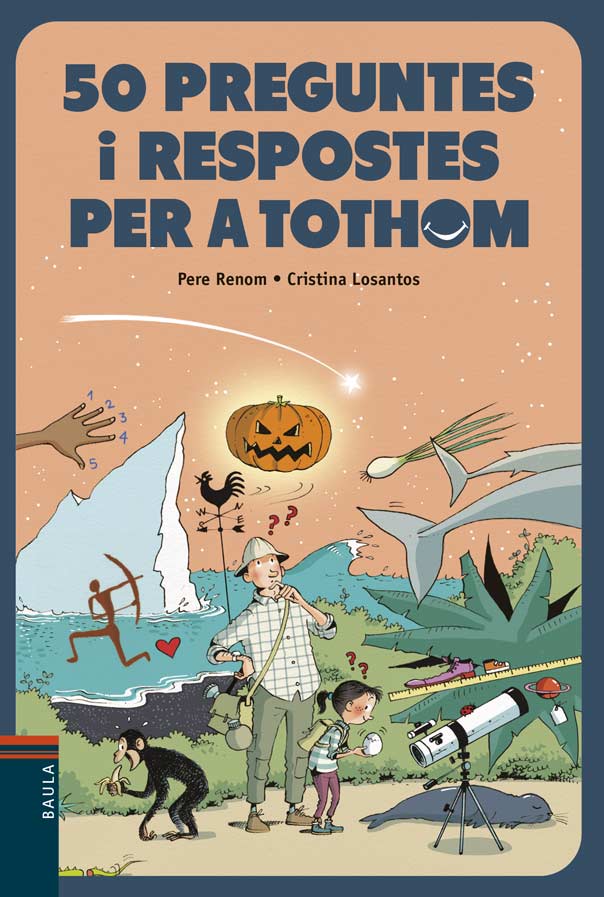 |
Book published by Baula Ed., with illustrations by Cristina Losantos, 2020 Which came first, the egg or the chicken? Why does the onion make us cry? What does it mean to break the sound barrier? Is iceberg ice sweet or salty? How is the numbering of the shoes calculated? What is acid rain?
Questions and answers are a powerful engine for learning. The book includes 50, but it could have included 500, 5,000, 50,000, or 500,000, and we would still be far from knowing everything.
After Curiositats del món natural per a tothom, this is the author’s second work published in the same collection. You can see reviews in infok, in the Dani Jiménez section in Tot es mou and in the blog of the booktuber Mixa
|
“Evolutionary history, genomic adaptation to toxic diet, and extinction of the Carolina Parakeet”
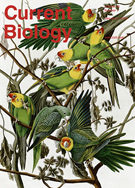 |
Article in the journal Current Biology Article published by Pere Gelabert, Marcela Sandoval-Velasco, Aitor Serres, Marc de Manuel, Pere Renom, Ashot Margaryan, Josefin Stiller, Toni de-Dios, Qi Fang, Shaohong Feng, Santi Mañosa, George Pacheco, Manuel Ferrando-Bernal, Guolin Shi, Fei Hao, Xianqing Chen, Bent Petersen, Remi-André Olsen, Arcadi Navarro, Yuan Deng, Love Dalén, Tomàs Marquès-Bonet, Guojie Zhang, Agostinho Antunes, M. Thomas P. Gilbert, and Carles Lalueza-Fox, in the volume 30 of the journal Current Biology, the January of 2020. Due to its relevance has been highlighted on the cover with the illustration of the 19th century American naturalist John J. Audubon. Download the article “Evolutionary history […] Carolina parakeet” in PDF |
“Una finestra a la ciència”
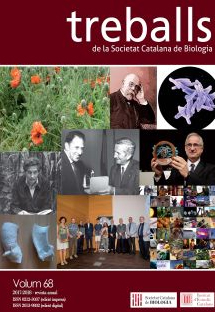 |
Article in the journal Treballs de la Societat Catalana de Biologia Article published in volume 68 (2017-2018), in summer 2019. The scienific program of Catalan TV “Quèquicom” has been on the air for almost eleven years. During this period it has issued almost three hundred chapters dedicated to the most diverse subjects and has consolidated itself as a program of reference in the country, both in the world of science and teaching. It has received a number of recognitions, including the National Communication Award and the Òmnium Communication Prize 2016, the Narcís Monturiol Plaque 2009 , and the Boehringer Ingelheim Prize for Journalism in Medicine 2008, 2009 and 2015. Its main merit has been to adapt scientific concepts into audiovisual language in a comprehensible and attractive way. |
“Obsolescència programada”
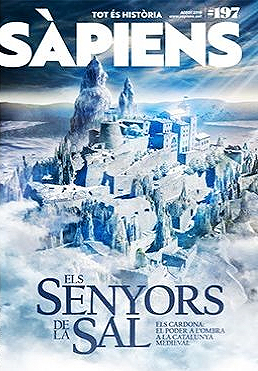 |
Article in the magazine Sàpiens Article published in volume 197 of Sàpiens magazine, in August 2018. Why settle for customers who buy only once, being able to make them buy during their whole lives? This is the premise with which the manufacturers of certain products work today, an older practice than we think. |
“El litoral recuperat del Barcelonès”
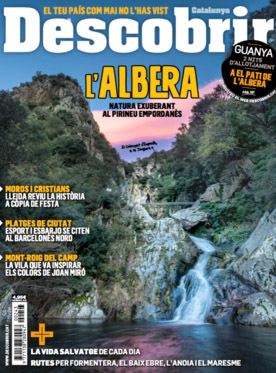 |
Article in the magazine Descobrir Catalunya Article published in issue 243 of the magazine Descobrir Catalunya, in May 2018. Illustrated with photographs of Jordi Play. Artisanal fishing, privileged beaches for swimming, nautical activities… The coast of Barcelona has been revived in recent decades, both above and below the waters. Download the article “El litoral recuperat del Barcelonès” in PDF |
“Curiositats del món natural per a tothom”
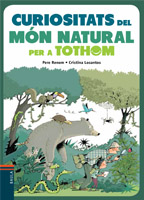 |
Book published by Baula, with illustrations by Cristina Losantos, 2018 – The Trojan horse was a wooden horse or it was a ship? You will find the answer to these questions and many more in this book. |
“Les paraules que no s’endú el vent”
“Sant Jordi i el drac. Del mite a la zoologia”
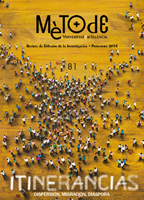 |
Article in the journal Mètode Article published in issue 81 of the Spanish science journal Mètode, the spring of 2014. Download the article “Sant Jordi i el drac” in PDF Download the article in Spanish “San Jorge y el dragón” in PDF |
“Paisajes de la paella”
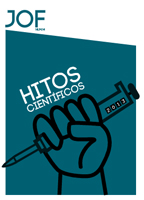 |
Article in the Journal of Feelsynapsis Article published in issue 14, March 2014, of the Spanish, online science Journal of Feelsynapsis Download the article “Paisajes de la paella” in PDF Download the article in English “The landscapes of paella” in PDF |
“Homo Philologus”
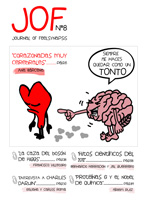 |
Article in the Journal of Feelsynapsis Article published in issue 8, January 2013, of the Spanish, online science Journal of Feelsynapsis. |
“Migració i reproducció: el cas de la família Renom”
 |
Article in the journal Arraona Article published in issue 33 of the journal Arraona, of the Historic Archives of Sabadell in December 2012. While demographic studies are usually done in big populations certain historical circumstances, such as Occitan migration that took place in XVI-XVII centuries, allow the genealogy to provide interesting information of the family-scale population dynamics. Download the article “Migració i reproducció: el cas de la família Renom” in PDF |
“Metàfora i ecologia”
“Els badius de Badalona. Un arxipèlag verd”
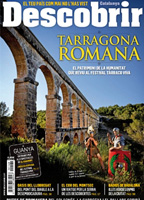 |
Article in the magazine Descobrir Catalunya Article published in issue 168 of the magazine Descobrir Catalunya, in May 2012. Illustrated with beautiful photographs of Albert Lleal. Many houses in the historic center of Badalona have some courtyards are called “badius”. They are private spaces hosting a stunning flora and fauna and can be considered a green islands set amid a sea of brick, concrete and asphalt. Download the article “Els badius de Badalona. Un arxipèlag verd” in PDF |
“Characterization of soils beneath a Posidonia oceanica meadow”
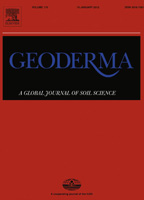 |
Article in the journal Geoderma Article published by O. Serrano, M.A. Mateo, P. Renom and R. Julià in in the issue 185–186 (2012) of the journal Geoderma. The study of a 475 cm core (spanning 4316 y BP) sampled in a Posidonia oceanica meadow in Portlligat Bay (NW Mediterranean), allowed to make the first detailed description of the soil below this endemic seagrass. Download the article “Characterization of soils beneath a Posidonia oceanica meadow” in PDF |
“Aprendre ensenyant”
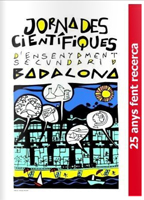 |
Article in the book Jornades Científiques Article published in 2011 in the commemorative book of the XXV Scientific Workshop of Secondary Education in Badalona. Briefly examines the history of teaching methods and highlights the originality and accuracy of research as an educational tool to complement the lectures. The Scientific Workshop of Badalona involve a public presentation of research conducted by students of the city and the surrounding villages. The abstracts of all the works presented in each edition are published in a book. This edition also has the collaboration of twenty short articles writen by people who participated in the Workshop during his 25 years of history. |
“Un tsunami improbable”
“Som graminívors els humans? Una aproximació paremiològica a la qüestió”
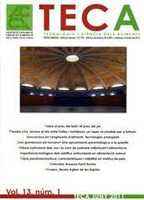 |
Article in the journal Teca Article published in 2011 in the journal TECA (Food Science and Technology) of the Catalan Association of Food Sciences. Quantitative paremiology (the categorisation and systematic quantification of proverbs) demonstrates that the Catalan language contains a dominant number of expressions about cereals and especially about bread. In addition, the study has detected a significant correlation between the proverbs and the dietary composition of Mediterranean Catalan cuisine. |
“Mont Blanc – Museu de ciència”
“Seasonal response of Posidonia oceanica to light disturbances”
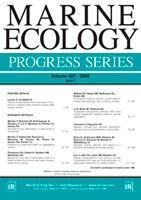 |
Article in the journal Marine Ecology Progress Series Article published by O. Serrano, M.A. Mateo and P. Renom in the issue 423 (2011) of the journal Marine Ecology Progress Series. The effects of changes in the irradiance reaching a Posidonia oceanica meadow were investigated seasonally in Portlligat Bay (NW Mediterranean), by means of in situ shading experiments. Dowload the article “Seasonal response of Posidonia oceanica to light disturbances” in PDF |
“Long-term stability in the production of a NW Mediterranean Posidonia oceanica“
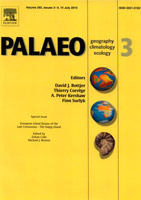 |
Article in the journal Palaeogeography, Palaeoclimatology, Palaeoecology Article published by M.A. Mateo, P. Renom and R.H. Michener in the issue 291 (2010) of the journal Palaeogeography, Palaeoclimatology, Palaeoecology. In situ shade experiments were conducted to find the relationships between the carbon stable isotope ratio (δ13C) of plant tissues, leaf net production, and incident irradiance. These functions were used to reconstruct light and net production using the δ13C of detritus contained in a core of P. oceanica matte over the last 4000 years. |
“Posidonia y cambio climático”
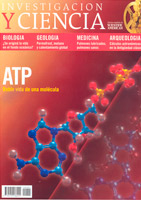 |
Article in the journal Investigación y Ciencia Article published along with Miguel Angel Mateo in the journal Investigación y Ciencia, the February 2010 issue. Based on the carbon isotope composition and leaf production it has been reconstructed the history of seagrass meadows during the last 1200 years. |
“Le praterie sottomarine”
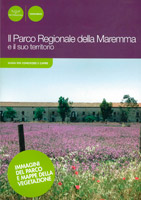 |
Article in the book Il Parco Regionale della Maremma e il suo territorio The Regional Park of Maremma located in Tuscany (Italy), celebrated in 2005 the thirtieth anniversary of its establishment with the publication of the book Il Parco Regionale della Maremma e il suo territory, in 2007. The book devotes the first part to the geographical context, a second part to animal biodiversity, a third part to the dynamics between sea and land, a fourth part to human history and tradition, and a final part to management. The third part includes an article by P. Renom, M. A. Mateo and J. Romero on seagrasses. |
“Visita virtual al Parc Natural dels Ports”
 |
CD published by the Depart. of Environment and Housing, Government of Catalonia Director of contents of a collective work carried out by the company Calidos. Technology Quick Time VR. From 2002 to 2003. Description of fauna, flora, geology and history of the Park. It also includes a dozen of itineraries that allow a virtual visit at different seasons by means of panoramic and interactive photographies of 360º. |
“Protecting the seagrass biome: report from the traditional seagrass knowledge working group”
 |
Article in the Bulletin of Marine Science Article published by S. Wyllie-Echeverria, K. Gunnarsson, M.A. Mateo, J.A. Borg, P. Renom, J. Kuo, A. Schanz, F. Hellblom, E. Jackson, G. Pergent, C. Pergent-Martini, M. Johnson, J. Sanchez-Lizaso, C.F. Boudouresque and K. Aioi. This plurinational group formed the Traditional Seagrass Knowledge (TSK) Working Group. The objectives of the group are to: (1) compile information and data describing traditional use of seagrass species from the scientist’s country of origin, (2) transfer information and data to the School of Marine Affairs, University of Washington (USA) for analysis and synthesis and (3) jointly publish the results of the project by the end of 2003. |
“La Mediterrània, una mar de déus, el seu estudi, una tasca d’herois”
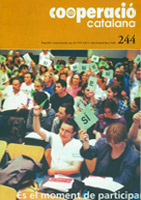 |
Article in the magazine Cooperació Catalana Article published in issue 244 of the magazine Cooperació Catalana in May 2002, and awarded with the 1st Award of Albert Pérez Bastardas to journalistic articles of knowledge and protection of the environment, granted by the Fundació Roca i Galès in Barcelona during 2002. Download the article “La Meditarrània, una mar de déus, el seu estudi, una tasca d’herois” in PDF |
“Els prats submarins de posidònia” (Children book and teaching guide)
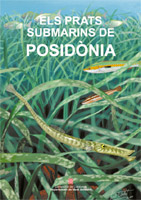 |
Children book published by Generalitat de Catalunya, with illustrations by Toni Llobet, 2001 The story, inspired by the Odyssey, tells how a boy named Ulysses befriends a curious fish, and lives some adventures that allow him to learn what is Posidonia, how are the marine meadows of Posidonia, what organisms it houses, what environmental problems presents and how it was traditionally used. At the end of the story there is a notebook explaining various aspects about posidonia, such as origin, reproduction, distribution, classification, annual cycle, and trophic relationships in its ecosystem. The story, originally written in Catalan, has been translated into Spanish, French and Arabic. Download the children book in Catalan “Els prats submarins de posidònia” in PDF Dowlonad the children book in Spanish “Las praderas submarinas de posidonia” in PDF Dowlonad the children book in French “Les herbiers sous-marins de posidonie” in PDF Dowlonad the children book in Arabic ” معشّبات البوزيدونيا البحريّة ” in PDF |
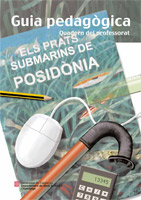 |
Teaching guide All information contained in the children book, develops the basis for activities proposed in the teaching guide. The contents of the guide are inserted mainly in the area of natural sciences, but also in other areas such as social sciences, language, math or physical education, thanks to a transversal approach of different subjects. The guide is aimed at upper primary and secondary school. It consists of two booklets: the students with the proposed exercises, and the teachers, with the solved exercises, additional information and a CD with the PDF of the students booklet, that permit to print a particular activity when needed. Download the teaching guide “Els prats submarins de posidònia” in PDF |
“Measurement of seagrass production using 13C stable isotope compared with classical O2 and 14C methods”
 |
Article in the journal Marine Ecology Progress Series Article published by M.A. Mateo, P. Renom, M.A. Hemminga and J. Peene in the issue 223 (2001) of the journal Marine Ecology Progress Series. The carbon incorporation rates in Zostera marina L. were measured using the stable carbon isotope 13C as a metabolic tracer. This method was compared with the classical O2 and 14C methods in microcosm experiments. |
“An unexplored sedimentary record for the study of enviromental change in mediterranean coastal enviroment: Posidonia oceanica (L.) Delile peats”
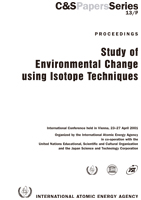 |
Article in the Prooceedings of the International Conference Article published by M.A. Mateo, P. Renom, R. Julià, J. Romero and R. Michener to the proceedings of the International Conference on the Study of Environmental Change Using Isotope Techniques, held in Vienna from 23 to 27 April 2001. The endemic Mediterranean seagrass Posidonia oceanica conjugates two unusual features that allow the reconstruction of the past history of the plant at two different time scales. On the one hand, the study of the leaf sheaths that remain attached to the rhizomes after abcision (lepidochronology), allows to differentiate up to 30 yearly cycles. On the other hand, radiocarbon dating of peat-like deposits derived from Posidonia oceanica rhizomes and roots (“mattes”), reveals a chronological organic record of the plant spanning several thousands of years. |
“Els herbassars de Posidonia oceanica“
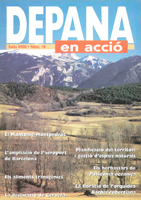 |
Article in the magazine Depana en Acció Article published together with Javier Romero at number 18 on the magazine Depana en Acció, in the summer of 2000. Download the article “Els herbassars de Posidonia oceanica” in PDF |
“Assessing temporal variability in the carbon balance of the seagrass Posidonia oceanica (L.) Delile”
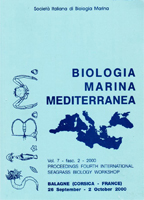 |
Article in the journal Biologia Marina Mediterranea Article published together with M. Pérez, T. Alcoverro, M. Manzanera and J. Romero. Is part of the Fouth Proceedings of International Seagrass Biology Workshop, which took place in Corsica from 26 September to 2 October 2000. The carbon gains and carbon losses of the Mediterranean seagrass Posidonia oceanica were estimated to obtain a plant carbon budget at different time scales. The model is based on the knowledge of photosynthesis-irradiance (P-I) relationships for different age classes, and respiration demands of different plant parts, and it is fed with data of incomming solar irradiance and water turbidity recorded at the study site since 1990. |
“Network for seagrass monitoring at the Catalan coast”
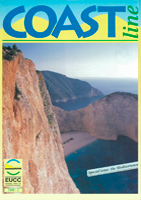 |
Article in the magazine Coast Line Article published with Javier Romero in the magazine Coast Line. Special issue: the Mediterranean, in February 1999. Download the article “Network for seagrass monitoring at the Catalan coast” in PDF |
“Xarxa de vigilància dels herbassars de fanerògames marines”
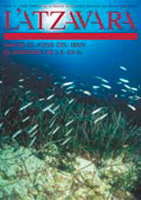 |
Article in the magazine L’Atzavara Article published along with Javier Romero in the issue 8 of magazine L’Atzavara, in 1999. Explains that Network for seagrass monitoring at the Catalan Coast is an initiative born from the collaboration between the Department of Marine Fisheries of the Autonomous Government of catalonia, the Sea School in Badalona and the Department of Ecology at the University of Barcelona, and seeks to establish a series of control points or stations distributed throughout the Catalan coast, in order to assess the biological status of a representative number of seagrass meadows and determine its evolution in time. Download the article “Xarxa de vigilància dels herbassars de fanerògames marines” in PDF |
“Xarxa de vigilància dels herbassars de fanerògames marines”
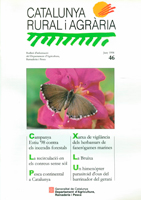 |
Article in the bulletin Catalunya Rural i Agrària Article published with Javier Romero in the issue 46 (June 1998), in Catalunya Rural i Agrària, a bulletin of information from the Department of Agriculture, Livestock and Fisheries of the Autonomous Government of Catalonia. Download the article “Xarxa de vigilància dels herbassars de fanerògames marines” in PDF |
“Xarxa Informacions”
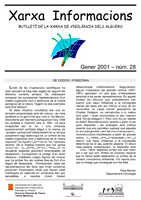 |
Newsletter of the Network for seagrass monitoring at the Catalan coast Edition of the monthly newsletter Xarxa Informacions, sent to more than 450 subscribers, in the framework of the Network for seagrass monitoring at Catalan coast. The newsletter was aimed to provide a regular flow of information to all the volunteer divers who participated in the project. It published a total of 35 numbers from May 1998 to December 2001. Newsletters from 1 to 12: download.zip |
“Coloración anómala en un individuo de Rana perezi en la provincia de Girona”
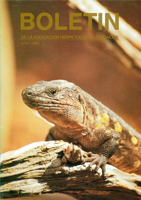 |
Article in the Boletín de la Asociación Herpetológica Española Article published in issue 6 of Boletín de la Asociación Herpetológica Española, in 1995. Describes the finding of a common frog tadpole of orange color, that was captured and held in captivity to verify that the abnormal coloration was kept upon completion of metamorphosis. |
